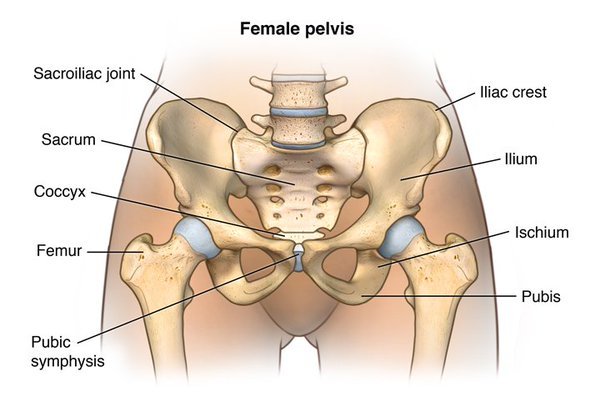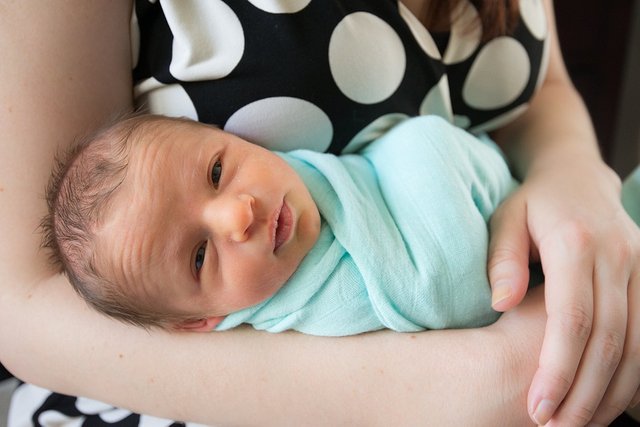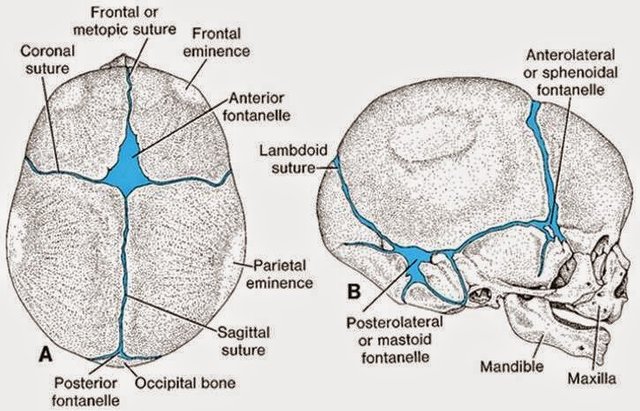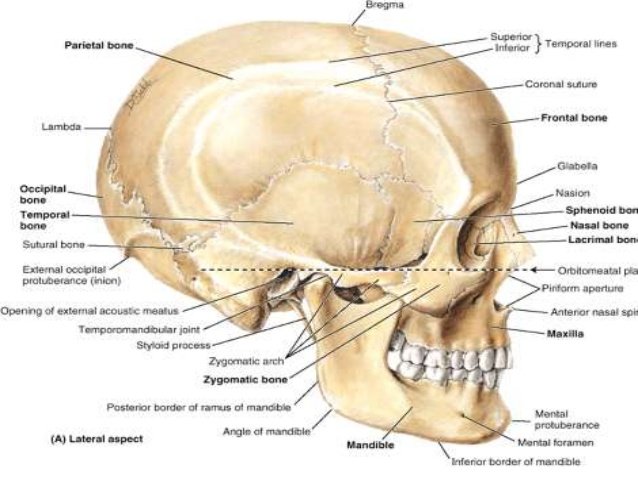Why are human babies so incredibly weak???
Why is it that a deer can give birth, and within literal minutes, the offspring will be standing alongside its mother like it's another day at the office, but you give birth and the offspring is nothing more than a wrinkly, blind, highly uncoordinated, poop-filled mess?

Well, the answer is, you have an extremely big head. Like, impressively enormous. You should be proud.

You see, walking on two feet is extremely strange when you think about it. Other than humans, only Kangaroos, Meerkats, and birds have a bipedal gate. Compared to most land-dwelling animals on the planet, we're the non-conformist teenagers who just have to do things differently.
However, this change in posture had an unfortunate side effect: human beings have a smaller diameter when it comes to their birth canal. The birth canal is the circular area bordered by the Ilium, Pubis, Sacrum, and Coccyx.
In order to have a more solid and structurally sound pelvis capable of bipedal locomotion, the birth canal had to narrow to accommodate the more efficiently placed sacrum.

This smaller birth canal means that human beings require help, and experience an extreme amount of pain and danger while giving birth. This is due to the anatomical limitations of the female pelvis.
You could probably sum it up with this incredibly detailed mathematical formula: smaller hole + big baby = a whole lot of trouble.
This issue is called the 'Obstetrical Hypothesis', and if you love to read dense and boring research articles, this one does a good job of wording things nicely, and only somewhat boringly.
https://www.ncbi.nlm.nih.gov/pmc/articles/PMC4305166/
So... what's the big deal?
Fetal head size has a direct correlation to the narrowing of the birth canal. You see, a deer is born with its head and brain essentially as large as it'll ever be, from a relative standpoint to it's body mass. If you were to scale an infant deer up to an adult size, its dimensions would stay relatively the same.
The reason for this is simple: a deer is at risk of attack from predators at nearly every moment of its life. The process of birth for a deer must account for this, if the species is to survive. Deer need to be ready to run their ass off at any given moment, and that includes their literal birthday.

For instance, when compared to the human birthing process, deer are born in near silence. The mother is in extreme danger when birthing, considering that she must become stationary, lose blood, and perform the actual act of birthing. If she or the infant were screaming (as humans do), it's basically an invitation for predators to have a free and effortless meal.
Because of this, deer, at the very least, must be able to stand within minutes. An infant deer can begin to walk somewhere in the range of 10 hours, with an eventual ability to run not far behind. You, however, take somewhere around 10-12 months to simply walk. The most you're capable of 10 hours after birth is limited to yawning, sleeping, and moving your limbs around with a staggering amount of inefficiency.
You're basically useless.

Seriously??? Survival of the Fittest My Ass!!!
We as humans need to stop thinking we're the best at everything. Honestly, we're an incredibly slow and weak creature. Take the strongest strongman, and put him in a cage with a very average Chimpanzee, and he will proceed to get his ass kicked in hilarious fashion.
Human beings are at a different place when it comes to the food chain. We don't spend every waking moment worrying about a giant cat ripping our face off and munching on our liver. The reason is because we have such big brains, and have found ways to out-think our sharp toothed friends.
But just as most everything in life, having a big brain comes with consequences. Feeble, drooling, poopy consequences...
Like a Fine Wine
The average adult human brain has a volume of approximately 1,350 cubic centimeters. When you compare that to a chimpanzees brain, which is at approximately 390 cubic centimeters, it's freaking huge. However, as big as it is, it can't always be that way, otherwise Mom would have a serious problem on her hands.
The average human brain at birth is approximately 330 cubic centimeters, or just shy of an adult chimpanzee. To be born with a brain at that 'ready to go' stage like a deer, the infants head would need to be 4 times as large to accommodate the brain, or roughly the size of a 6-7 year old child.

Considering the fact that Mom is already risking life and limb to birth the child when the brain is at 330 cubic centimeters, she would literally die from the process if the head was any bigger. Obviously this doesn't make much sense, considering she needs to nurse the child and ensure it survives to procreate on its own.
Nature decided to help mom out a bit though, with the adaptation known as fontanelles, or more commonly as 'soft spots'.

Fontanelles are areas of the cranium that are primarily connective tissue that are slowly ossifying as the child gets older. During birth, they allow for the different cranial bones to literally overlap one another, providing some 'give' to the infants head as it passes through the tight fitting birth canal. As the child grows, they will slowly start to close the gap, inching closer and closer until they unite with the other cranial bones, linking together with interesting joints called 'sutures'. Usually by the age of 50 or so, these sutures will have completely fused, creating an extremely strong encasing for the brain.

So moms smaller birth canal is represented by a smaller head, and less developed brain in the infant child, and consequentially a prolonged overall development into adulthood.
Mom must care for us in nearly every capacity imaginable. We will poop and pee with no shame, scream violently over the slightest bit of confusion, and require constant attention so that we don't kill ourselves exploring our living room. Aren't we awesome?
Despite our pathetic infantile state, things will progress over time, slowly getting better and better.
Human beings have a fully grown head around the age of 6-7, although their brain is still in need of further development. The brain itself is as massive as it will ever get, but the neural wiring still has quite a ways to go. It will take a human being roughly between 18 - 25 years before its brain is fully developed, and can be said to be truly adult.
So what's the moral of the story? Be thankful for such a tiny-headed feeble baby, because the alternative is roughly the size of a cantaloupe...

That's a big NO...
very interesting information!
Thanks!
Good post @justincottle
To had some more points to your post, if the human baby were to be born with the same fisical development of a chimpaze baby (our closest relative) the gestation would increase from 9 months to 24 months (2 years), we are very premature when we born, but on the good side, it created in our species stronger family and tribal bonds because woman will need help when delivering a new life to our world!
Other thing is what anthropologists cal the "sponge effect": because we are born soon, we start sooner to learn sounds, smell, touch, speak, think! This in the thousands of years is a increadible evolutionary advantage over our friends chimpazes!
Peace, Carlos
Awesome! Thanks for the info Carlos!